Projects
WHIRLS: The impact of ocean fine-scale whirls of climate and ecosystems
PIs: S. Swart, A. Biastoch, S. Fawcett, S. Speich
WHIRLS is an ERC Synergy project about small-scale ocean processes having large-scale impacts. Heat and carbon are the currencies of regional and global climate, constantly exchanged between the ocean and the atmosphere. This exchange is strongly influenced by fine-scales ocean eddies—whirls—that flux heat and carbon towards, or away from, the air-sea interface.
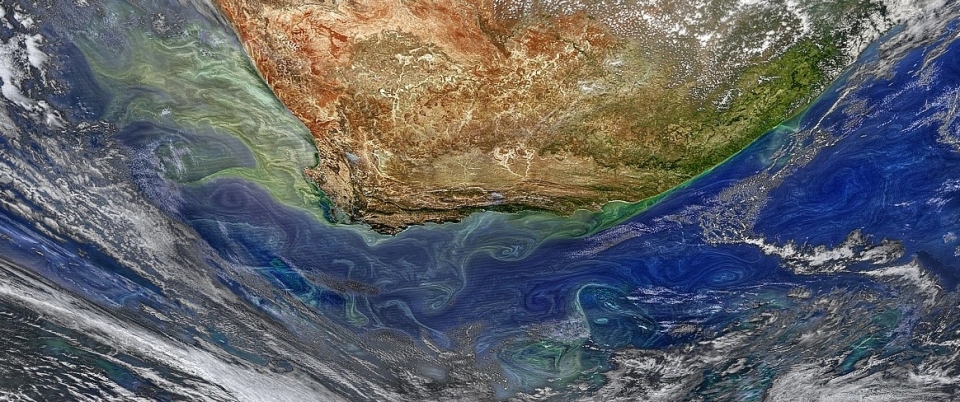
Satellite view of the ocean ‘whirls’ (ocean eddies and jets) that are fundamental to understand in the project. In this view, phytoplankton blooms act as tracers of the ocean fine-scale circulations. Image: NASA/Ocean Biology Processing Group
WHIRLS will use an interdisciplinary approach to study fine-scale processes across a continuum of scales (1–100 km) and assess their impacts on air-sea exchange and marine biogeochemistry and biodiversity. We focus on the Agulhas Current System because it is a global hotspot of eddy activity, ocean-atmosphere heat exchange, and marine productivity and diversity. It is also a region that plays a key role for the global ocean circulation and global climate and climate change. We will use multiple coordinated observing strategies, including research vessels and a large ensemble of autonomous platforms, to collect physical, chemical, and biological datasets across scales. These data will be supplemented by high-resolution models of the ocean and the atmosphere as well as the latest data science methodologies.
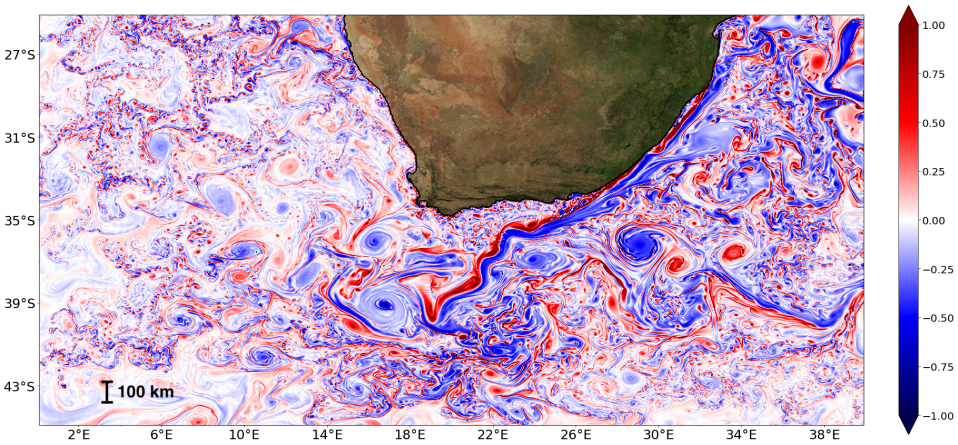
This view of relative vorticity (fluid rotation) in the km-scale model INALT60 that will be used in WHIRLS. Credit: Arne Biastoch, GEOMAR
The point of the ERC Synergy Grant is to bring together researchers with different expertise to work on very complex problems that no person or institute can address on its own. We are 4 PIs that bring together our teams and collaborators to tackle this complex issue. Arne Biastoch – GEOMAR, Kiel, Germany, Sabrina Speich – Ecole Normale Supérieure, France, Sarah Fawcett – U. Cape Town, South Africa, Seb Swart – U. Gothenburg, Sweden
Funding: ERC Synergy, €12M – 2024-2030
QUICCHE: QUantifying Interocean fluxes in the Cape Cauldron Hotspot of Eddy kinetic energy
PIs: L. Beal, K. Donohue, Y. Lenn, S. Swart, C. Roman
The Cape Basin in the southeast Atlantic is a global hotspot of eddy kinetic energy, fed by a leakage of waters from the subtropical Indian Ocean via the Agulhas Current. A proportion of warm and salty Agulhas waters are vigorously stirred and mixed into the cooler and fresher Atlantic by co-interacting rings and eddies. Recent studies suggest that most Agulhas leakage is found outside these rings. We hypothesize that a large proportion of the Indian Ocean waters that leak into the Atlantic are to be found in submesoscale features generated by the mesoscale strain field. Observations of these features are lacking, as are estimates of the fluxes they affect. To fill this gap we propose to:
(1) Observe and characterize submesoscale features generated by the mesoscale eddy strain field. (2) Make novel estimates of Agulhas leakage with new observations, using theoretical eddy diffusivity and eddy flux frameworks. (3) Relate diffusivity and fluxes to new (SWOT) and existing satellite altimeter observations to infer variability in Agulhas leakage.
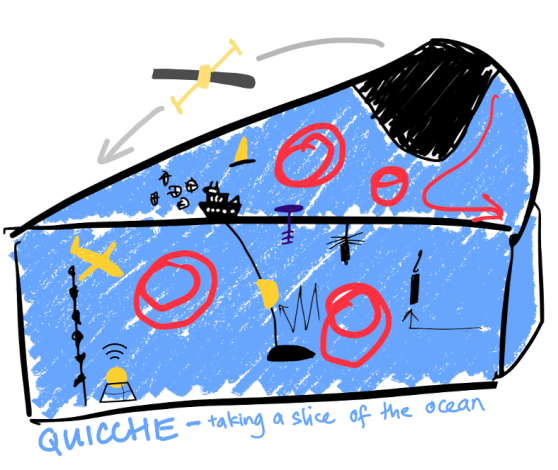
Funding: National Science Foundation (NSF), Swart funded by Wallenberg Academy Fellowship
Reducing Future Global Climate Uncertainty: Regulation of the ocean’s heat and carbon by small-scale processes in the Antarctic sea-ice regions
PI: S. Swart
The seas surrounding Antarctica are where vast amounts of heat and carbon exchange between the atmosphere and the deep ocean. The physical processes in the Southern Ocean that underpin these exchanges ultimately determine the rate of climate change and therefore mitigation measures. Despite outstanding progress in observational techniques, there are extremely few observations, which has led to arguably the largest knowledge ‘blind spot’ in global ocean-climate research and predictability.
Specifically, new evidence suggests we urgently require to understand highly energetic upper ocean flows and instabilities (called submesoscale eddies and fronts, which evolve at scales of 0.1-10 km and hours-days). Through enhanced vertical exchange of properties, these phenomena change upper ocean mixing and stratification, thereby amplifying heat and carbon exchange at the air-sea interface. The changes in stratification by submeoscale processes can directly alter the transport of these climate-acute properties to the ocean interior, where they are stored at centennial timescales. Critically, contemporary understanding of these processes occurring in the sea ice regions surrounding Antarctica are severely poor due to a dearth of field data. This, in turn, has led to global climate models experiencing the greatest biases of key processes in the Southern Ocean.
To undertake this scientific challenge, we will coordinate state-of-the-art field observations and fit-for-purpose modelling experiments, including deploying under-ice capable ocean robots from ice breaker expeditions. A new ocean topography satellite mission will provide unprecedented high-resolution ‘surface views’ of the submesoscale processes. These cornerstone observations will be combined with models, of varying complexity, to provide new knowledge on how sensitive ocean-ice processes are to our changing climate and thereby improve climate prediction.

Funding: Wallenberg Academy Fellowship Extention – Knut and Alice Wallenberg Foundation – 2021-2026
Marie Curie Fellowship: Submesoscale Processes in a Changing Environment
PI: M. du Plessis; Host: S. Swart; Collaborators: S. Speich, B. Ward
In SPICE, our aim is to enhance our knowledge of oceanic heat and carbon uptake in the Southern Ocean in order to reduce uncertainties in future global climate model projections. Using ocean observations from state-of-the-art autonomous platforms and high-resolution numerical simulations, we will 1) quantify the variability of heat and carbon air-sea fluxes in the Southern Ocean and 2) better understand how ocean submesoscale processes modulate heat and carbon exchange between the atmosphere and ocean interior. These findings will enhance our understanding of both contemporary and future climate and will provide a benchmark for future research to critically assess climate models – an exercise vital to improving forecasts and thus mitigating against the effects of our changing climate.

GROOM-II: Gliders for Research, Ocean Observations and Management: Infrastructure and Innovation
PI: L. Moutier; Co-PIs: S. Swart; L. Biddle; B. Queste; et al.

Funding: European Union Horizon 2020 – 2020-2023
Surface ocean physical dynamics of the Southern Ocean with a focus on the Marginal Ice Zone
Fine scale dynamics to large- scale climate sensitivities
PI: S. Swart
The Southern Ocean is a region rich in dynamics in terms of fine scale and high frequency variability of the surface ocean as well as the enhanced forcing of the atmosphere on the upper ocean. There is increasing evidence that seasonal to subseasonal temporal scales, meso- and submesoscale physical processes play an important role in understanding the sensitivity of ocean primary productivity to climate change in the Southern Ocean. However, surface ocean processes are poorly quantified due to lack of observations made at the right time and space scales. These scale gaps have been recognized by the global science community as being a key link towards improving our understanding of the sensitivity of the Southern Ocean to climate change. This project aims, for the first time, to thoroughly and systematically observe and investigate the role and scales of which these processes have in modulating the full seasonal cycle of upper ocean physics in the Southern Ocean.
Annually, 18 million km2 of ice grows and melts around Antarctica. We have limited knowledge of the ocean within, and at the edge, of this enormous sea-ice impacted domain of the Southern Ocean. ROAM-MIZ aims to observe the full seasonal cycle of the upper ocean at high-resolution in the MIZ near the Greenwich Meridian. Visit the live missions site for real time data visualisation.

Funding:
Knut and Alice Wallenberg Foundation (Wallenberg Academy Fellowship) – 2016-2021
Swedish Research Council (VR) – 2020-2024
Southern Ocean Carbon and Heat Impact on Climate
(SO-CHIC)
PI: J.B. Sallee; co-PI and lead of WP1: S. Swart; Other members: M. du Plessis, J. Edholm, T. Spira
The overall objective of SO-CHIC is to understand and quantify variability of heat and carbon budgets in the Southern Ocean through an investigation of the key processes controlling exchanges between the atmosphere, ocean and sea ice using a combination of observational and modelling approaches. SO-CHIC considers the Atlantic sector of the Southern Ocean as a natural laboratory both because of its worldwide importance in water-mass formation and because of the strong European presence in this sector already established at national levels, which allow to best leverage existing expertise, infrastructure, and observation network, around one single coordinated overall objective. SO-CHIC also takes the opportunity of the recent re-appearance of the Atlantic Sector Weddell Polynya to unveil its dynamics and global impact on heat and carbon cycles. A combination of dedicated observation, existing decades- long time-series, and state-of-the-art modelling will be used to address specific objectives on key processes, as well as their impact and feedback on the large-scale atmosphere-ocean system.
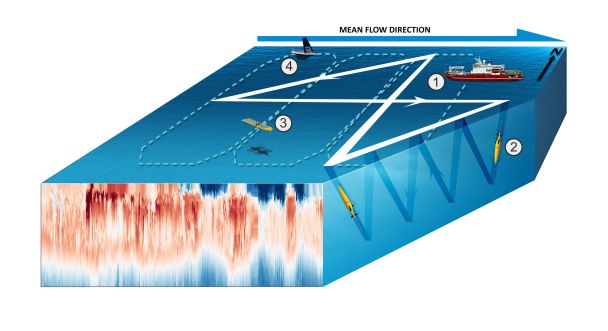
Funding: European Union Horizon 2020 – 2019-2024
Recently completed projects:
Swedish Center for Ocean Observing Technology (SCOOT):
S. Swart, A. Wahlin, O. Oskarsson, A. Wranne, T. Linders
Funding: European Regional Development Fund (Tillvaxtverket) – 2019-2022
The Ocean Beneath Antarctic Sea-ice: observing new scales to address a global challenge
PI (Sweden): S. Swart; PI (South Africa): S. Thomalla & S. Nicholson
The Antarctic sea-ice covered ocean remains one of the least observed systems on the planet and has been severely under investigated in climate research. It is arguably the largest ‘blind spot’ of current global ocean-climate research. Through an innovative, coordinated and multidisciplinary approach, Sweden and South Africa will conduct novel autonomous ocean glider observations in the Antarctic marginal ice zone (MIZ). This partnership is extremely timely due to the availability of new technological capabilities for under ice observations, current government research strategy and access to the remote field sites. This project is to support exchange and collaborations between Sweden and South Africa.
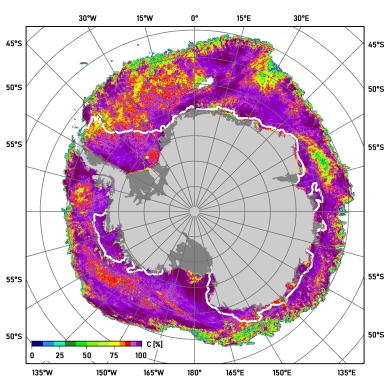
Funding: STINT (Sweden) & National Research Foundation (S Africa) – 2019-2021
Gliders in the Agulhas Current (GINA)
PI: M. Krug; co-PI: S. Swart & J. Hermes
This project aimed to better understand the response of the coastal and shelf regions to changes in the Agulhas Current off the SE coast of South Africa.
In this project, interactions between the Agulhas Current and coastal and shelf regions were investigated using data collected from autonomous Seagliders and Wave Gliders (autonomous robotic platforms) in the oceanic shelf regions along the extent of the Agulhas Current.
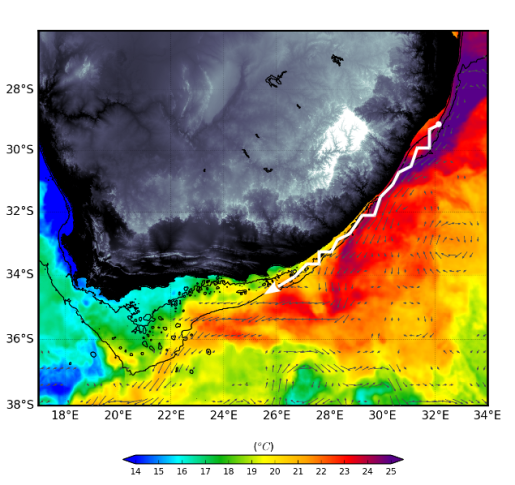
Funding: GINA is a multi-institutional funded project, namely by CSIR, SAEON, SAIAB, University of Gothenburg (through the K & A Wallenberg Foundation) – 2016 – 2020.
The role of storms in shaping upper ocean physics and primary production in the Southern Ocean
PI: S. Nicholson; co-PI: S. Swart, P. Monteiro
Beneath passing Southern Ocean storms, the ocean is characterized high eddy kinetic energy (eddies and fronts). The passage of intense storms over this underlying meso to submesoscale eddy variability may strongly impact the upper ocean environment where phytoplankton live, yet exactly how remains unclear. This project plans for the first time to address this important climate knowledge gap by showing how these intense storms impact upper ocean physics and biogeochemistry with unique observations and modeling. Novel twinned autonomous ocean robots experiments have been designed to directly observe scale sensitivities and links between storm driven wind forcing, upper ocean mixing and phytoplankton growth. Several numerical models (idealised and regional) have been setup to (a) understand further the associated stormdriven mechanisms and (b) explore how changes in storm characteristics could impact annual primary production in the SO. Given that the SO is arguably the main source of mediumterm uncertainty in global CO2 fluxes, understanding such climate sensitivities is of critical importance.
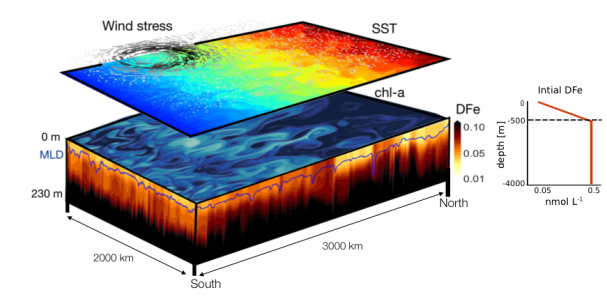
Funding: National Research Foundation – South African National Antarctic Programme
Reducing the climate impact of marine research using carbon neautral autonomous platforms
PI: S. Swart; co-PI: A. Wåhlin, C. Húezé
Marine and oceanographic research requires the use of large research ships for access to the ocean, especially in remote areas such as the high latitudes. These vessels are normally large (±100m) and consume vast amounts of fuel (crude oil & diesel) during their usually long voyages that can extend between days or months. Ocean robotics, on the other hand, are small, relatively cheap and yet sophisticated science platforms that enable scientists to collect observations of unprecedented resolution in support of improved climate and ecosystem understanding. These robotic platforms are carbon neutral instruments, while at the same they collect information about the carbon uptake by the ocean – a crucial process that helps us understand how the ocean regulates global climate.
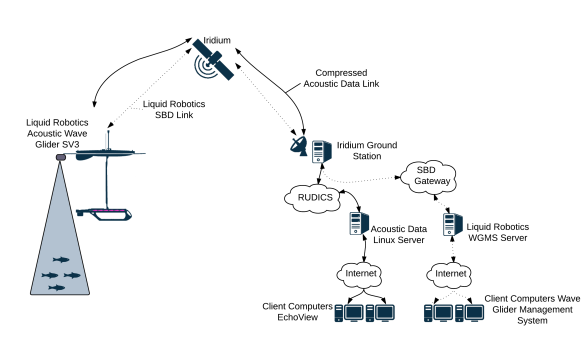
Funding: Climate Fund, University of Gothenburg
Training in Gliders (TING)
PI: S. Swart; co-PI: K. Assman, 2017
Funding: Swedish Royal Academy of Sciences (KVA)
Surface ocean physical dynamics of the Southern Ocean (2015-2017)
PI: S. Swart; co-PI: P. Monteiro; N. Chang
Funding: National Research Foundation – South African National Antarctic Programme
Southern Ocean observational infrastructure for oceanography and climate research (2014-2018)
PI: S. Swart & P. Monteiro
Funding: Department of Science & Technology, South Africa